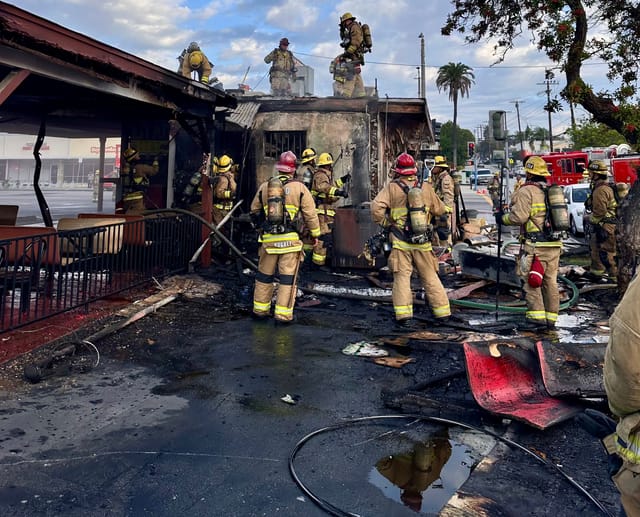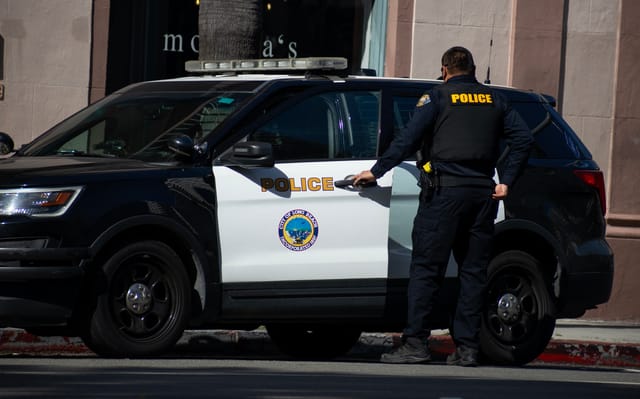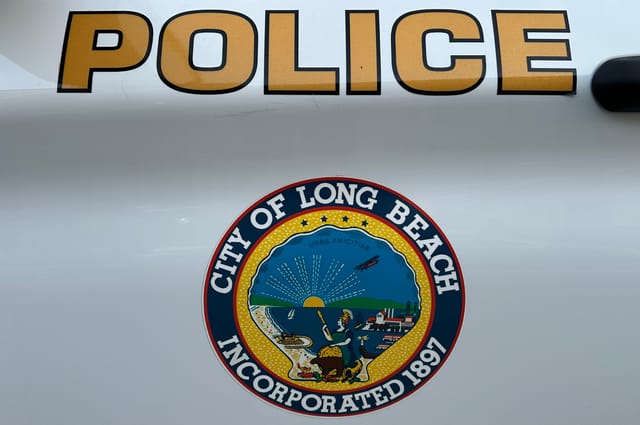‘An environmental catastrophe’: Residents unhappy with response to toxic pesticide in West Long Beach air
Environmental agencies have known methyl bromide levels near Hudson Elementary School have been high since at least 2018 but most residents were unaware until recently.

For a decade, local environmental activist Jesse Marquez has been sounding the alarm on the use of a highly toxic pesticide near homes and schools in West Long Beach.
A study in 2018 confirmed heightened levels of methyl bromide in the air at Hudson Elementary School and hundreds of homes in the surrounding community. That study was reinforced with more data beginning in 2023.
Residents in the area, however, only became aware of the chemical in the last few months. And the first detailed information presented directly to them came Thursday night during a community meeting hosted by several environmental agencies.
Marquez was not at the meeting because he is "extremely ill," local advocate Theral Golden told the crowd of more than 60 people — with another 120 watching via zoom.
“Methyl bromide in close proximity to a school should have never happened,” Golden said on behalf of Marquez. “The use of that pesticide in that location must be eliminated. It’s hurting our children.”
“This is an environmental catastrophe that's been going on for decades,” he added
What is methyl bromide?
Methyl bromide is a colorless, odorless gas that was internationally banned for most uses in 1989, according to Adolfo Garcia of the California Air Resources Board, or CARB.
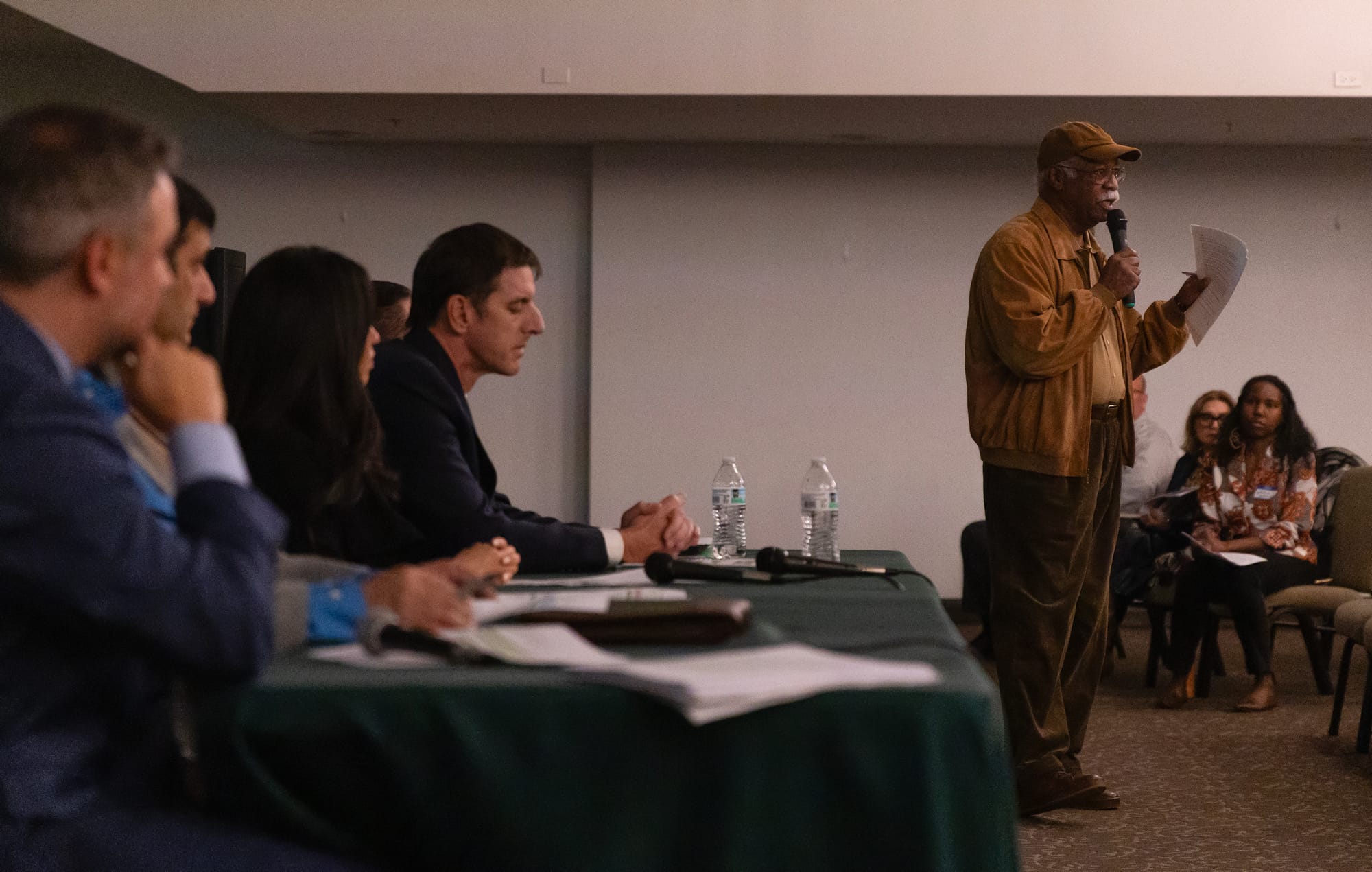
“It is still allowed in limited instances for spraying for pests in agricultural products that are imported and exported in California in a process … called commodity fumigation,” Garcia said, adding that the state regulates the pesticide as a “toxic air contaminant, meaning we have established that it is an air pollutant that can increase risk of serious illness or pose a hazard to human health.”
Locally, the pesticide is regulated by the LA County Agricultural Commission, which issues “restricted materials permits” to facilities that use the pesticide for commodity fumigation, which is required by federal law, Garcia said.
During the fumigation process, tarps are placed over the produce and then the area is filled with the pesticide for a number of hours determined by the quantity of goods, Garcia said. The toxin is then pumped out of the building through stacks “to keep the plume of methyl bromide above ground level.”
Three Rivers Trucking and San Pedro Forklift are the two facilities in West Long Beach permitted to use methyl bromide, both of which have been operating for nearly three decades a short distance across the Terminal Island Freeway from Hudson Elementary. More than 600 homes fall within the affected area.
There are nine total facilities in LA County authorized to use the pesticide, all of which fall within the San Pedro Bay ports complex, according to Max Regis of the county Agricultural Commissioner’s office. The two Westside facilities, however, are the only operations in close proximity to schools and homes, Garcia said.
How much pesticide is in the air and what are the health risks?
Before taking its own readings, CARB first looked at the most recent study from the South Coast Air Quality Management District, which monitored air quality near Hudson as well as other locations throughout the region beginning in August 2018. Nine months of data showed the average concentrations of methyl bromide were exponentially higher near Hudson Elementary than in other parts of Long Beach and cities throughout the region.
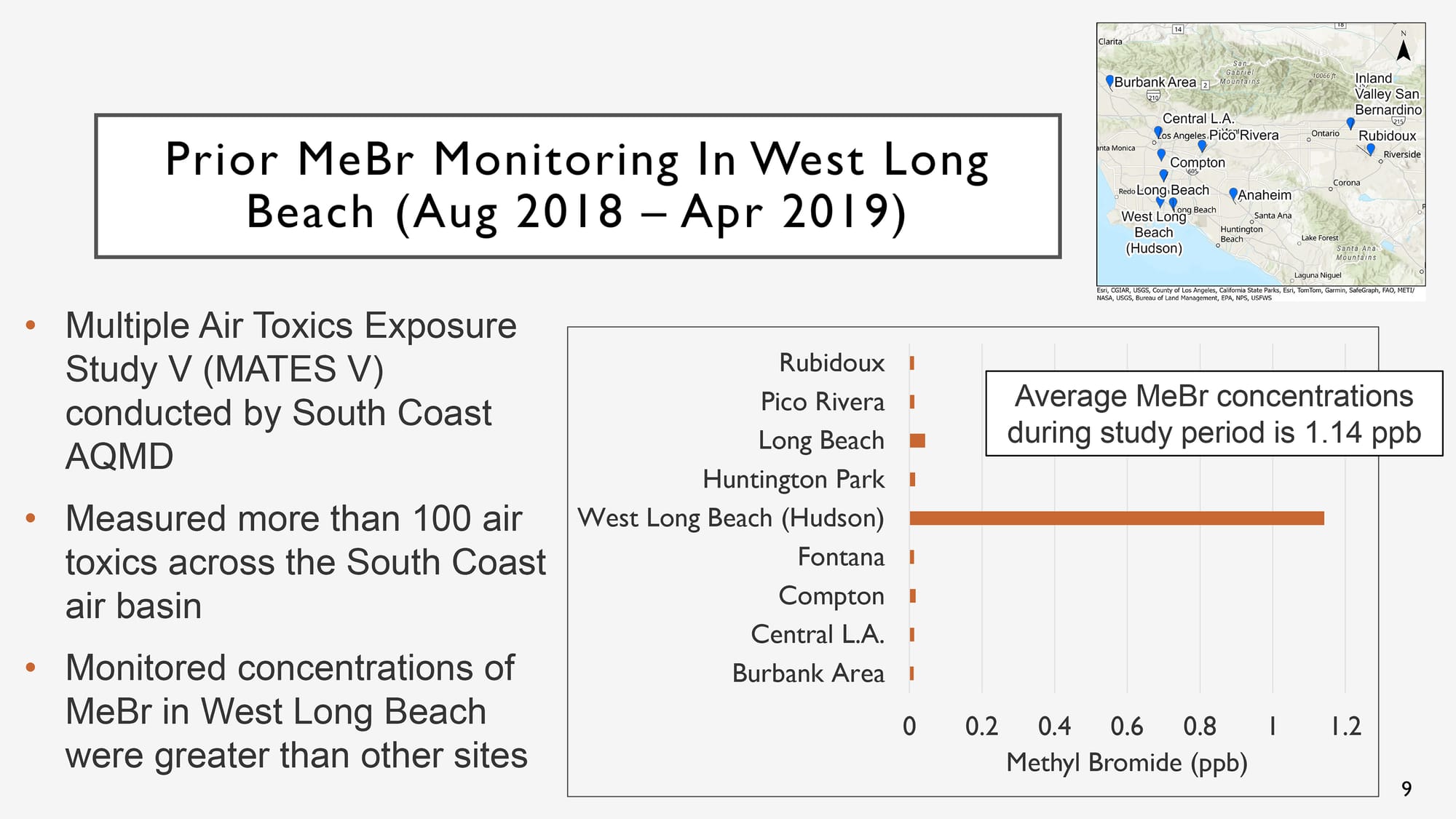
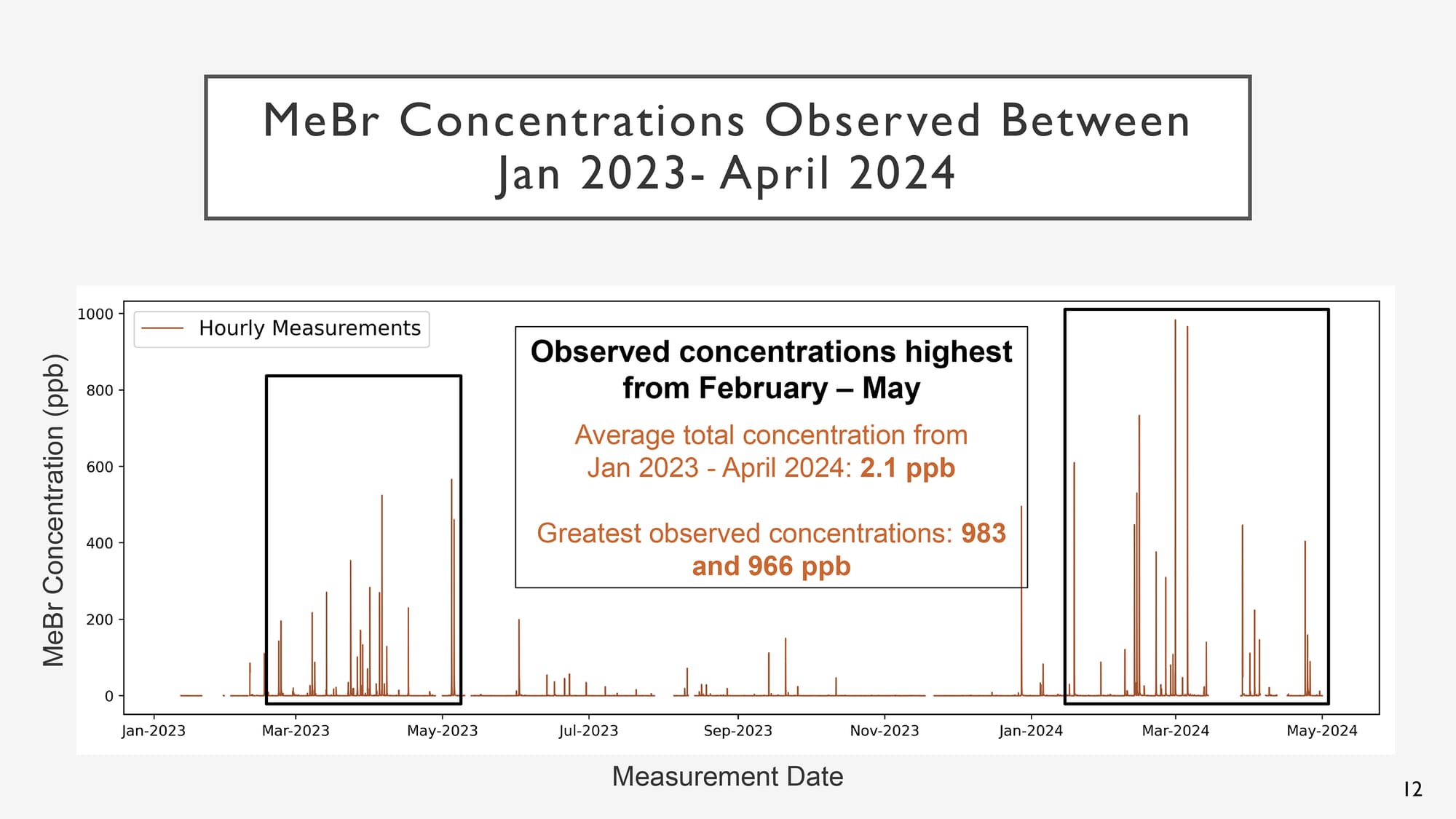
In January 2023, CARB established a temporary air monitoring site in West Long Beach near the school and the affected homes. Hourly data collected through April 2024 showed elevated levels of methyl bromide, with concentrations peaking from February to May both years. The hours of elevated concentrations were typically 6-11 p.m.
According to the agencies, long-term exposure to levels of 1 part per billion (ppb) can cause lesions in the nasal cavity and other negative developmental and nervous system effects. The monitoring results showed an average concentration of 2.1 ppb, according to the Thursday night’s presentation — up from less than 1 ppb in the 2018-19 study.
Exceeding the 1 ppb threshold for long periods of time is especially dangerous for children and pregnant women, according to Paula Torrado-Plazas from the Office of Environmental Health Hazard Assessment.
Short-term exposure to the pesticide at 1,000 ppb, meanwhile, can cause headaches, dizziness, nausea and difficulty breathing. CARB’s monitoring did not register any instances of such levels, but concentrations did reach 983 ppb and 966 ppb on Feb. 29, 2024, and March 5, 2024, respectively.
Joan Greenwood, an analytical chemist turned environmental consultant and a Wrigley neighborhood resident, said a risk is a risk, no matter how small — especially when it comes to children. Greenwood pointed out that risk models do not account for toxins accumulating in the body.
“I will say that this health risk assessment does not include the cumulative aspect that you mentioned, and that is a limitation that exists currently within the development of this and something to definitely take into consideration,” Torrado-Plazas acknowledged.
Jill Johnston, a professor of environmental health at the Keck School of Medicine of USC, noted that there have not been comprehensive studies on the effects of methyl bromide on children, adding that knowledge of potential carcinogenic properties is limited due to a lack of studies.
“I think it's really important that we use cumulative burden in a way that prompts more action because the community faces multiple risks, rather than as an excuse not to do anything because there's so many other factors that are impacting the community,” Johnston said.
During the meeting Regis and Golden got into a heated exchange after Regis noted that workers in the facilities wear respirators. Golden pointed out that children at school and nearby residents don’t wear respirators. Regis responded by saying the workers are in closer proximity and that his office is operating within the guidelines of existing federal and state laws and regulations.
“So we need the political people to change the guidelines,” Golden said. To which Regis responded: “Correct.”
What actions are being taken?
The Agricultural Commissioners’ Office became aware of the CARB monitoring results in July of last year, according to Regis. The agency quickly began work to amend the permits for the two Long Beach facilities.
“[The operators] have been incredibly helpful and are part of the process,” Regis said. “They themselves don't want to hurt anybody in the community. No one is in the business of hurting someone.”
The commissioner’s office met with the businesses in December and, with input from the environmental agencies, established new permit conditions, including taller stacks and larger fans, both of which will disperse the toxin “higher in the air, reducing ground level concentrations,” according to the presentation.
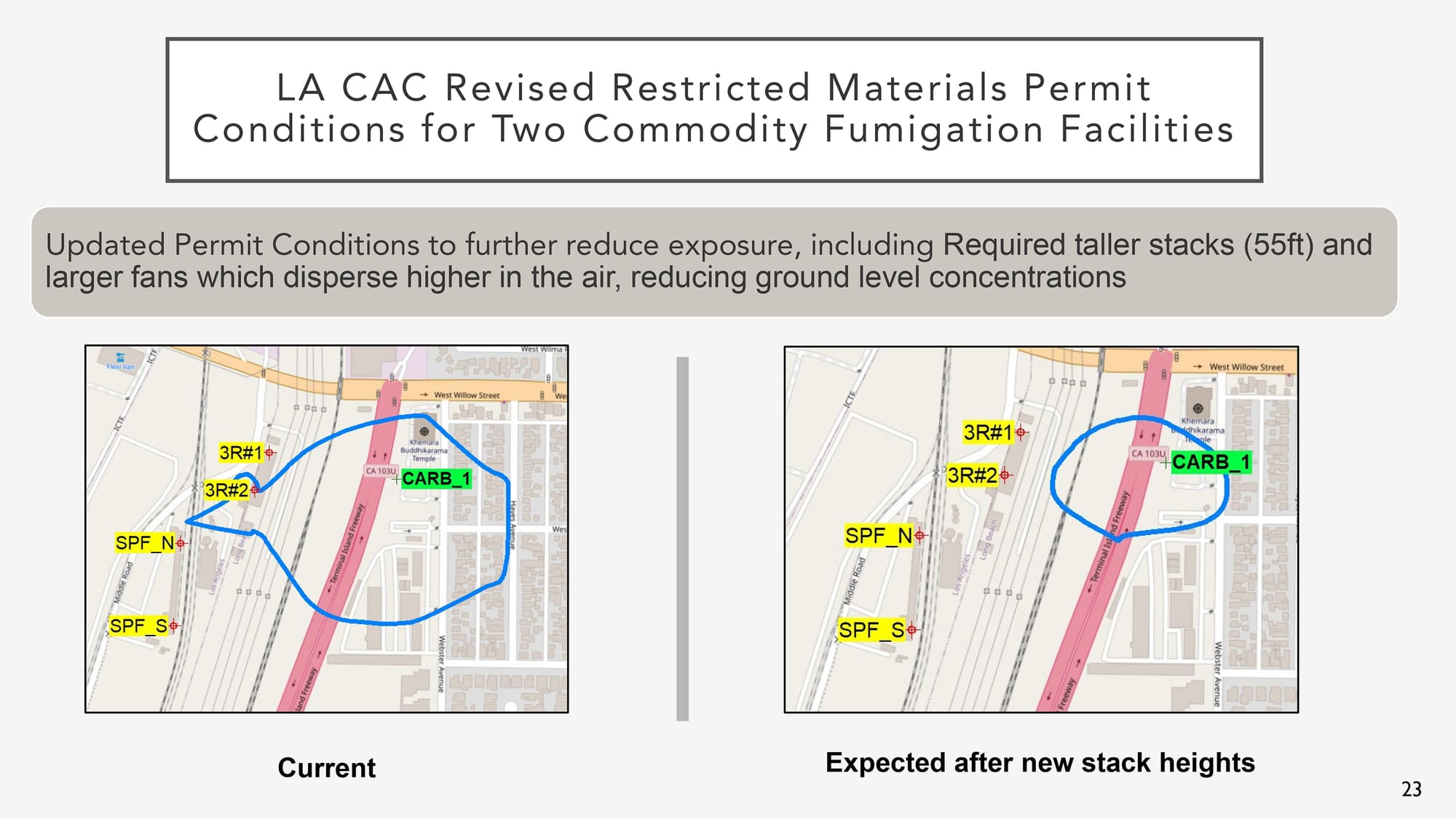
These updates to the facilities are expected to be completed within the next week, Regis said.
Other updated permit conditions include: only fumigating after 6 p.m., outside of school hours; more requirements to prevent ground level leaks such as closing facility doors during fumigation; increased record keeping by the businesses for comparison to ongoing toxin level monitoring; staggering the release of the toxin from the four fumigation chambers to keep concentrations at any given time to a minimum; and a reduction in the amount of the pesticide that is allowed to be used each day from 1,000 pounds to 200 pounds.
Moving forward, CARB will continue to monitor methyl bromide levels on the Westside, according to spokesperson Kevin Olp. The data will be published online for the public, he added.
To reduce exposure, Torrado-Plazas recommended residents close doors and windows, especially during peak activity times. The public, however, was unimpressed with the advice.
“So people are being asked to incarcerate themselves in their own homes,” said Rossana Sierra, 66, who has lived on the Westside for 17 years.
Multiple residents were direct with their skepticism of the agencies’ approach.
“I’m sorry but don’t trust any of you,” longtime Westside resident and activist Carlos Ovalle said while standing beside over a dozen medications he said he takes daily to treat a neurological disorder that resulted from living downwind from “all the crap that we get from the ports, from the freeway, from the incinerator, from the refineries, from the petroleum coke facilities.”
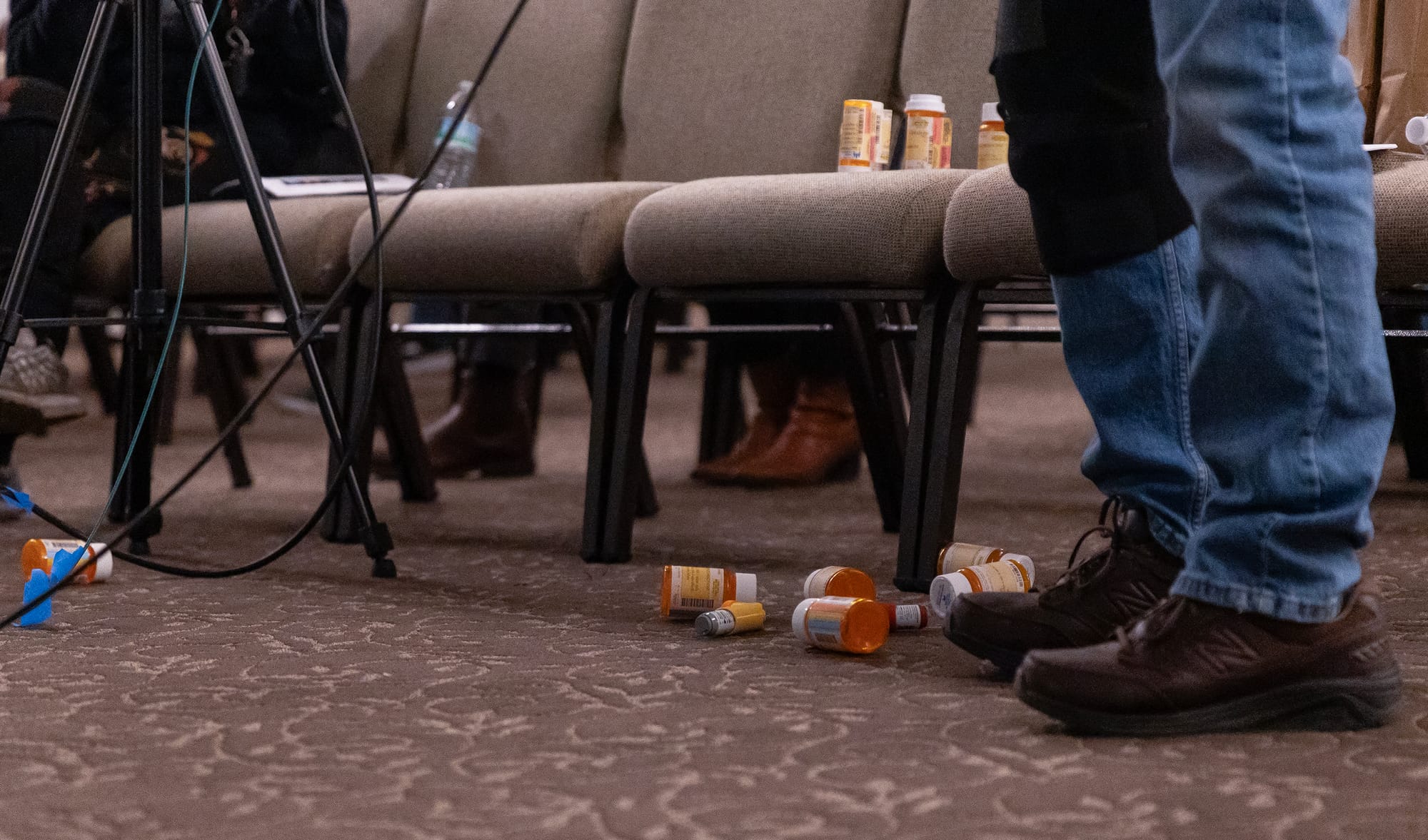
Ovalle added that spewing the toxin higher into the air may reduce ground level concentrations but it simply presents another environmental hazard for residents: Methyl bromide is a Class I ozone-depleting substance, according to the U.S. Environmental Protection Agency, which allows more ultraviolet radiation to reach the Earth’s surface.
“This is unbelievable. You guys are apologists for the industry,” Ovalle said, noting that the only reasons alternatives are not used is because they are expensive. “So, in essence, … we are subsidizing, with our health, the profits of the industry that you guys appear to be defending.”
Regis confirmed that cost is a major factor when it comes to alternatives.
A community left in the dark
Despite data dating back to 2018 showing elevated levels of the toxic pesticide, most people in the community were unaware of the dangers lurking in the very air they were breathing. Sylvia Betancourt, a supervisor with the Long Beach Alliance for Children with Asthma, said it's not fair families were not notified years ago.
“Here we are in 2025 and now we’re discussing,” Betancourt said. “Why wasn't the community informed so people could take steps to protect their health and their safety?”
AQMD Assistant Deputy Executive Officer Ian MacMillan noted that the 2018-19 study was published in 2021.
“We did advertise it as much as we can but it clearly didn’t get to this community,” he said. “So I think we need to do better.”
Long Beach Unified School District officials were similarly in the dark over the findings, despite Hudson Elementary School being within the affected area. According to a spokesperson, the district only became aware of the issue in early November following a press inquiry.
Also in November, the LBUSD Board of Education voted to shutter Hudson Elementary due to low enrollment, among other factors. The decision, however, was not influenced by the methyl bromide pollution.
The school remains in normal operation through the end of this school year. The facility will then be vacated but kept up as it may be used in the future to host students from other campuses undergoing major renovations.
“Long Beach Unified will continue to prioritize the health and safety of our community, supporting any necessary corrective actions to protect public health and uphold community trust,” the spokesperson said in an email Friday. “The health and safety of our LBUSD community remains our top priority.”
We need your support.
Subcribe to the Watchdog today.
The Long Beach Watchdog is owned by journalists, and paid for by readers like you. If independent, local reporting like the story you just read is important to you, support our work by becoming a subscriber.


